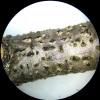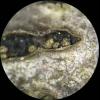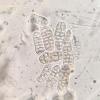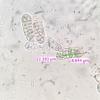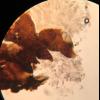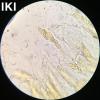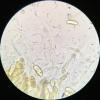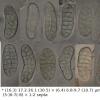
28-12-2025 12:08
Margot en Geert VullingsThis possible Karstenia was found on the bark of d

21-12-2025 21:32
Pol DebaenstHello, Garden, Burgweg 19, Veurne, BelgiumOn 10/1

26-12-2025 21:19
Arnold BüschlenPithyella chalaudii Priou. Ist als Bryoparasit in

21-12-2025 09:32
Hello.A tiny ascomycete found embedded in wood in

18-12-2025 21:17
Pol DebaenstThe identification took me to Byssonectria deformi

24-12-2025 17:08
Hulda Caroline HolteHello, I have found this propoloid ascomycete on
Spores:
17.5-26.2 x 6.3-8.9µm
Me 21.7 x 7.9µm
Q 2.1-3.2
Qe 2.8
N=24
Hyaline, occasionally allantoid, rounded ends. They do not appear to bud.
(3)7(8) septate, with multiple longitudinal septa.
I have tried to key it out using Jaklitsch, W. M., & Voglmayr, H. (2014). "Persistent hamathecial threads in the Nectriaceae, Hypocreales: Thyronectria revisited and re-instated" but without much luck.
Any help would be appreciated.
Thank you in advance.
Ethan

it's from the group around T. zanthoxyli, but which one...
- Not T. rhodochlora, too narrow spores.
- T. zanthoxyli should have perithecia clearly immersed in stroma and much more curved spores (my Czech coll. attached), although there are also exceptions and the coll. published in https://doi.org/10.1007/s11557-021-01763-z looks much like yours in this aspect.
- T. lonicerae and T. virens I haven't seen myself. T. lonicerae differs macroscopically, as far as one could rely on this feature, also the spores have more narrow poles like T. berolinensis.
So I would say either T. zanthoxyli with atypically straight spores, or T. virens with atypically long spores.
Viktorie
